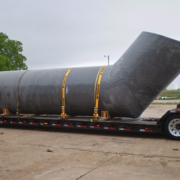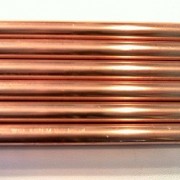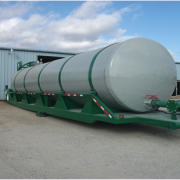Smoke Resistance? Fiberglass Reinforced Plastic is Smokin’
 But seriously, during a fire fiberglass reinforced plastic does create smoke. As we mentioned in a previous blog post, new regulations and code requirements regulating smoke toxicity have made smoke an important consideration, for some.
But seriously, during a fire fiberglass reinforced plastic does create smoke. As we mentioned in a previous blog post, new regulations and code requirements regulating smoke toxicity have made smoke an important consideration, for some.
Why Is Smoke A Concern?
Personnel safety is the main reason why smoke is a concern in service environments. Smoke can present a personnel safety hazard for two reasons:
1. Heavy dense smoke cannot only make breathing difficult, but can obscure the escape paths when people are trying to escape from a building during a fire.
2. Smoke toxicity, especially from organic materials, is also a critical safety consideration. Even if the smoke is very light, but is highly toxic, personal injuries can occur.
Smoke toxicity is one of the reasons the New York City and New York State Fire Marshals have now added to their code requirement consideration for low smoke toxicity.
Is Smoke An Important Building Factor?
Whether smoke is an important factor in your construction is really dependent on your unique requirements. However, rather than deciding to spend a lot of time and energy trying to develop low smoke alternative, you really should try to determine if low smoke is really important in your service environment. If your tank, piping, or duct application is mostly outdoors in an industrial location, then perhaps smoke is of only minor importance. In cases where this is the case, if you are going to have a major plant fire, the smoke generated probably is the least of anyone’s worries. Likewise, in many service installations where there is low “people occupancy”, such as water and waste treatment facilities, composting facilities, warehousing buildings, etc., then again, low smoke is perhaps only of secondary importance.
Deciding whether fire retardancy (low flame spread), smoke generation, or smoke toxicity are even important or necessary for your application should be your first step in determining if smoke is an important building factor. These features are going to cost you extra money. If they are not required, do not specify them. Well over 90% of all FRP composite pipe and duct installed to date is not fire retardant and does not provide low smoke generation and low smoke toxicity properties.
When choosing and specifying the materials for your system, consider the cost of the materials, installation and, most importantly, long-term operating costs. Installation of a Factory Mutual approved system may provide lower insurance rates. However, such a system may also cost more in materials and labor, and may require replacement or repairs in half the time when compared to a properly constructed dual laminate system.
If smoke generation, smoke toxicity and smoke resistance are important to your project, then we recommend that you select the internal barrier/liner of your duct or pipe based upon the best resin matrix for your service environment.













